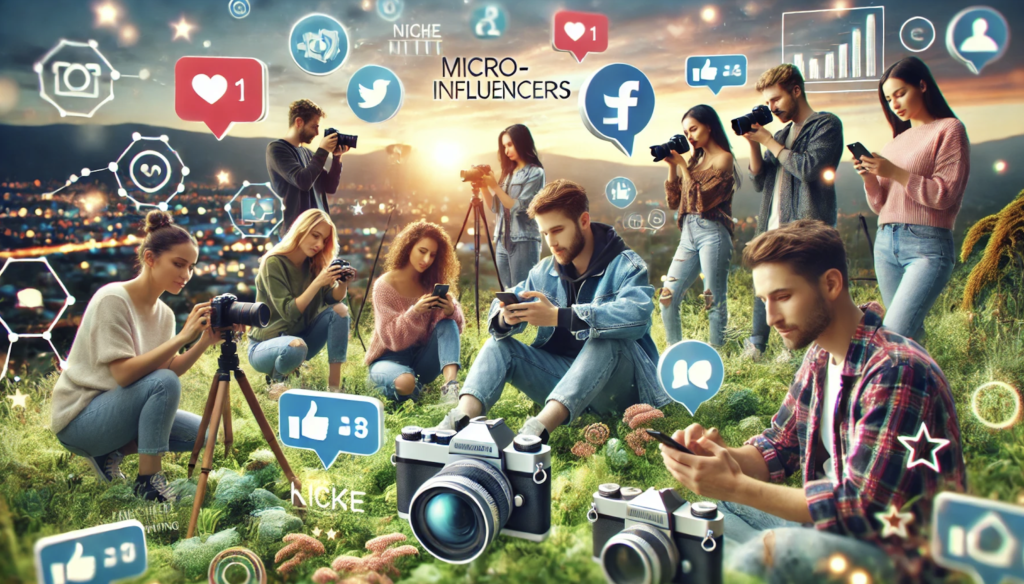
What are Micro-Influencers?
So, what are micro-influencers exactly? Micro-influencers, sometimes called “nano-influencers”, are social media personalities who have cultivated a dedicated and engaged following within a specific niche. They are considered more relatable and trustworthy compared to macro-influencers or celebrities, making them effective brand ambassadors. Their audiences view them as experts in their respective fields, whether it be fitness, fashion, technology, or lifestyle.
Not all influencer marketing campaigns involve high-priced celebrities. Micro-influencers have become a powerful asset for brands looking to acquire new users in a more authentic and cost-effective manner. Unlike celebrity influencers, micro-influencers typically have between 10,000 to 100,000 followers, allowing them to maintain high engagement rates and a strong connection with their audiences. This blog post explores what micro-influencers are, why they are valuable, and how businesses can leverage them to grow their user base.
Why are They So Effective for User Acquisition?
- Higher Engagement Rates – Micro-influencers typically see more interaction on their posts, making their recommendations more impactful.
- Authenticity & Trust – Their followers trust their opinions, leading to higher conversion rates.
- Cost-Effective – Collaborating with micro / nano-influencers is more affordable than working with celebrities or macro-influencers, making them a great option for brands with limited budgets.
- Niche Targeting – they have highly specific audiences, allowing brands to reach the right demographic more effectively.
- Stronger Community Bonds – Due to their smaller follower count, micro-influencers often engage personally with their audience, strengthening brand-consumer relationships.
How to Use Micro-Influencers for User Acquisition
- Identify the Right Influencers – Use tools like Upfluence, AspireIQ, or Heepsy to find influencers in your niche who align with your brand’s values.
- Establish a Clear Collaboration Strategy – Define your campaign goals, whether it’s brand awareness, conversions, or direct sign-ups.
- Offer Incentives & Affiliate Programs – Provide influencers with commission-based incentives or exclusive discount codes to encourage conversions.
- Leverage Authentic Content – Allow influencers to create organic content that resonates with their audience rather than using scripted advertisements.
- Track & Measure Performance – Monitor key performance indicators (KPIs) such as engagement rates, referral traffic, and conversion rates to evaluate campaign success.
Conclusion
If you’re still asking, what are micro-influencers and how can they help your brand grow, the answer is clear: they offer an effective way to acquire new users while maintaining authenticity and high engagement. By strategically collaborating with the right influencers and focusing on organic content, businesses can drive user growth and build long-term customer relationships. As influencer marketing continues to evolve, micro-influencers remain a key component of a successful digital marketing strategy.
Do you use micro / nano-influencers for marketing? Tweet me and let me know about your experience! 👉 @kylemccarthyism.
Interested in reading more about growth marketing? Read more about growth marketing here.